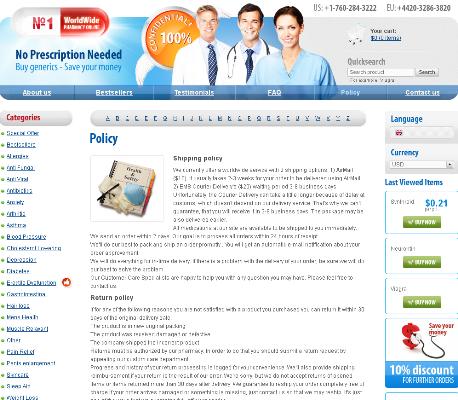**zofran during Pregnancy: Is It Safe?**
Understanding Zofran: What Is It?
Zofran, with its active ingredient ondansetron, is primarily used to prevent nausea and vomiting caused by cancer treatments, surgery, and certain medical conditions. It's classified as a selective serotonin 5-HT3 receptor antagonist, which means it blocks the action of serotonin, a natural substance in the body that can cause vomiting. Understanding how Zofran works requires delving into its interaction with these receptors. Serotonin receptors are located in key areas of the brain and GI tract, wich, when activated, trigger the vomiting reflex.
### Understanding Zofran's Key Characteristics
| Property | Description |
|---|---|
| Active Ingredient | Ondansetron |
| Classification | Serotonin 5-HT3 Receptor Antagonist |
| Primary Use | Prevention of nausea and vomiting |
The drug's effectiveness and safety profile in its standard usage make it a commonly prescribed medication. However, its use during pregnancy, a time marked by unique physiological changes, continually draws scrutiny and assessment.
Zofran's Common Uses and Benefits

Zofran, a medication primarily known for its efficacy in reducing nausea and vomiting, has become a popular option, especially for patients undergoing chemotherapy and radiation therapy. These treatments are notorious for causing severe sickness, and Zofran presents a reliable solution to help mitigate these side effects, enhancing patients' quality of life. It's also commonly administered post-surgery to manage nausea resulting from anesthesia, which many patients would otherwise find quite debilitating.
The benefits of Zofran extend beyond cancer patients and surgical recovery. Women experiencing severe morning sickness, medically referred to as hyperemesis gravidarum, often report significant relief upon taking Zofran. This can be particularly transformative, allowing them to continue daily activities without constant nausea. Despite some controversy, it remains a commonly prescribed medication for this condition.
The convenience of Zofran lies in its various forms – tablets, dissolvable strips, and injectable formats – providing flexibility based on patient needs. This adaptability ensures that individuals, regardless of their specific medical situations, can receive the necessary relief in a manner suited to their conditions. For many, Zofran appears as a beacon of hope on teh road to better health, reducing the burden of relentless nausea.
Evaluating Zofran's Safety during Pregnancy
Determining the safety of Zofran during pregnancy requires a balance between potential benefits and risks. Zofran, while effective for treating severe nausea, has been scrutinized for its possible impact on both mother and baby. Numerous studies have been conducted to ascertain whether taking Zofran while pregnant is safe, with some indicating potential risks, such as heart defects or cleft palate in infants. However, other research suggests these risks are minimal or inconclusive.
Pregnant women should consult their healthcare provider to evaluate the necessity of Zofran on a case-by-case basis. In many instances, teh decision hinges on the severity of nausea symptoms and whether alternative treatments have been effective.
The healthcare provider's role is crucial in assessing whether Zofran's benefits outweigh any potential risks for each individual patient. By understanding the specific circumstances and medical history, both the expectant mother and her provider can make an informed choice that prioritizes the health and well-being of both mother and baby.
Potential Risks for Pregnant Women

While Zofran, a medication originally intended for chemotherapy patients, has become a common prescrioption for pregnant women experiencing severe nausea, its safety remains a topic of debate. Some studies have linked Zofran to a miniscule yet noticeable increase in the risk of birth defects, including heart malformations and cleft palate. This undoubtedly causes concern among expectant mothers and healthcare providers.
Expectant women must weigh these potential risks with their healthcare providers, thoroughly discussing the prescribed dosage and timing. It's crucial to understand that despite these potential dangers, many women have used Zofran during pregnancy without issues. However, being well-informed and cautious about what you intake during pregnancy is always advisable.
Research Findings: Studies and Expert Opinions
Various studies on Zofran's use during pregnancy have been conducted, providing mixed results. Some research indicates potential risks, such as a small increased chance of congenital heart defects and cleft palate if taken in the first trimester. However, other studies have found no significant correlation between Zofran and adverse pregnancy outcomes, emphasizing its benefits in managing severe nausea and vomiting.
Experts remain divided. Teh U.S. FDA maintains a cautious stance, suggesting that more research is needed to definitively conclude Zofran's safety during pregnancy. Many healthcare providers still prescribe it, weighing benefits over potential risks for each case.
For pregnant women seeking alternatives, several natural remedies and medications are often explored. Ginger, vitamin B6, and acupressure are popular choices for managing morning sickness without the need for prescription drugs. Healthcare providers might also recomend other medications, such as metoclopramide, that have been studied and are considered safe for use during pregnancy.
Alternatives to Zofran for Nausea Relief
For those seeking alternatives, ginger is a popular natural remedy that can help alleviate nausea. Studies have shown that ginger tea or ginger capsules can be quite effective in reducing morning sickness symptoms. Another method is acupressure, specifically wristbands designed to apply pressure to the Pericardium 6 (P6) acupressure point, wich some find to be beneficial.
Vitamin B6 supplements are also recomended by healthcare providers as a non-pharmacological option for managing nausea during pregnancy. Small, frequent meals and staying hydrated are practical tips that can help make a significant difference. For more scientific perspectives, you may visit this study and another resource.



